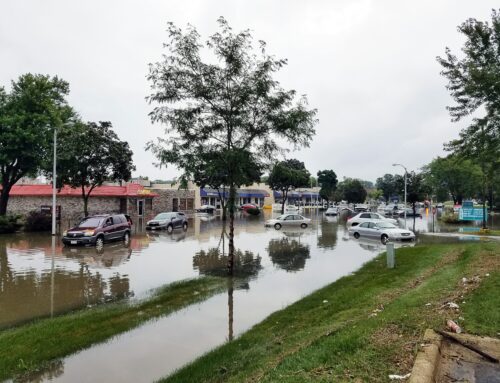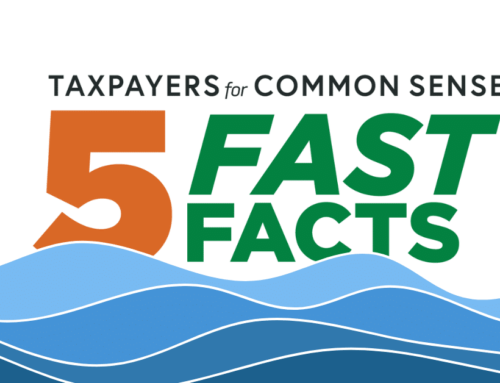As the 112th Congress begins to tackle runaway deficits, government spending cuts, and congressional earmark bans, they will undoubtedly be looking at the state of the nation’s dysfunctional highway financing. A Congressional Budget Office (CBO) paper released this week highlights a number of options to fund the nation’s transportation program in the future and efficiencies that can be gained by improving project selection and implementing alternative revenue raisers. Changes to the transportation program are critical, as the CBO estimates the Highway Trust Fund will lack sufficient revenue to cover costs by 2012.
Simply put, the Federal government’s mechanism for financing transportation expansion, enhancement, and maintenance is broken, and required three infusions in the past two years from the Treasury’s General Fund just to remain solvent. Raising the gas and diesel taxes — the largest revenue sources for the Highway Trust Fund — would increase revenue, but with a new Congress in place that has no intentions of raising taxes of any kind and the White House opposing a gas tax increase, this is a politically impossible proposition. In addition to the funding shortfalls outlined in the brief, the CBO also explores options for project selection, how to best target available funds, and options for future funding of the transportation program.
Notable elements from the CBO brief:
Fund Projects for Which Benefits Exceed Costs: Funds are currently distributed in two primary ways: through formulas that consider a number of factors to determine how much money a state will get through a particular program, leaving the state to decide on which projects to spend the funds; and through earmarking and other direct funding of projects that specifically outline how a state is to spend the dollars it receives. The CBO finds that formulas, which are used to distribute approximately 80% of transportation funds, “do not necessarily provide federal support to the most economically advantageous projects.” The federal government could improve funding provisions by financing high-return projects while using better analysis of their cost and benefits. Ranking and funding projects so that only those with the largest share of benefits are implemented may yield greater program efficiency at lower cost. Under improved project selection, pet projects with little to no benefits, such as Alaska’s infamous “Bridge to Nowhere,” could be scrapped with substantial savings to the Highway Trust Fund.
Congestion Fees: The CBO found “spending could be substantially lower if demand for highway travel was reduced by charging fees to highway users that reflected the cost they impose on others when they drive during periods of congestion.” Congestion fees introduce supply and demand concepts to the nation’s highways and promote the efficient use of existing infrastructure. During periods of high demand, such as morning or evening rush-hour, lane space is allocated to those willing to pay a charge. Drivers unwilling to pay alter travel time and reduce vehicular mileage, therefore reducing congestion. Across the nation, various local governments have implemented congestion fees through express lanes and high-occupancy toll lanes. These fees have reduced congestion, increased vehicle throughput, and raised much-needed additional revenue. According the CBO brief, “widespread use of congestion pricing would reduce the amount of capital investment needed to sustain the operational performance and condition of the highway system by nearly one third…” This would require the federal government to commit only $38 billion per year—the same as 2009 levels.
Future Funding Sources for Highway Infrastructure: With the Highway Trust Fund set to slip back into the red by 2011, the CBO also considers revenue sources available to Congress. These include mileage (or vehicle miles traveled) charges, increased fuel taxes, general fund revenues, and greater investment from the private sector. Fuel taxes, as outlined above, are unlikely to be set at a level sufficient enough to cover the cost of system maintenance and upgrade. Furthermore, “general revenues provides no incentive for the efficient use of the system” and reduces funding for other federal programs. Encouraging private sector financing of public infrastructure, specifically for highways, appears promising since it reallocates risk to the private sector and leverages funding based on future returns from a transportation facility. Additionally, the CBO finds that if mileage-based fees were implemented nationwide, revenues could possibly cover the federal contribution to building and maintaining highways. Mileage fees could vary by location, vehicle type, or time of day and more closely match the social costs — such as driving during peak periods — imposed by drivers.
With Congress poised to take up a multi-year bill to reauthorize the nation's surface transportation program, the CBO has put all options on the table for bringing greater efficiency and sustainability to the nation’s transportation system. Congress should do the same if it hopes to come up with a lasting solution that will keep our transportation system in good repair into the future.











Get Social